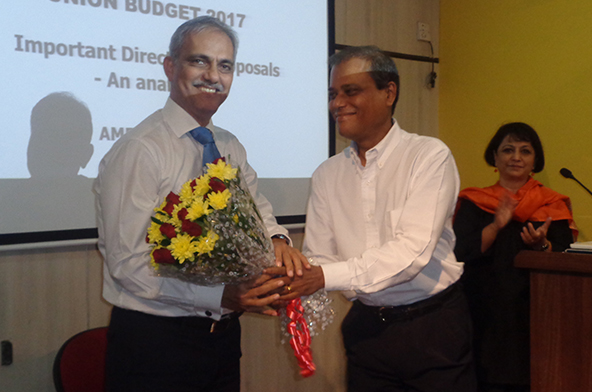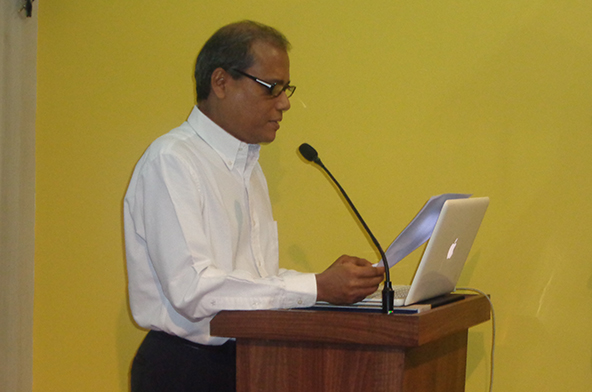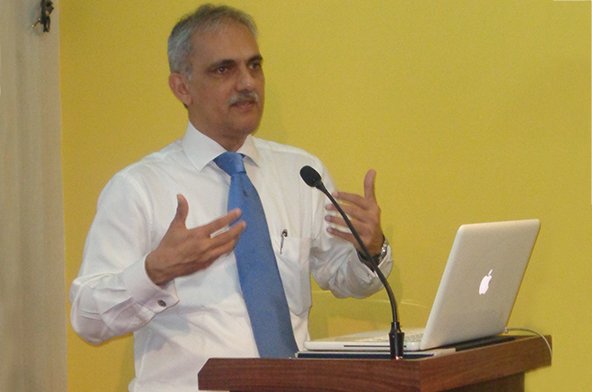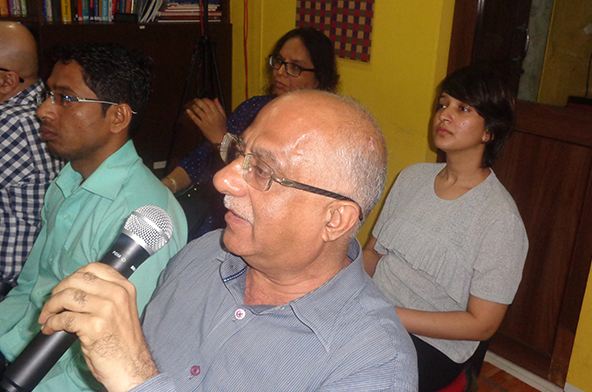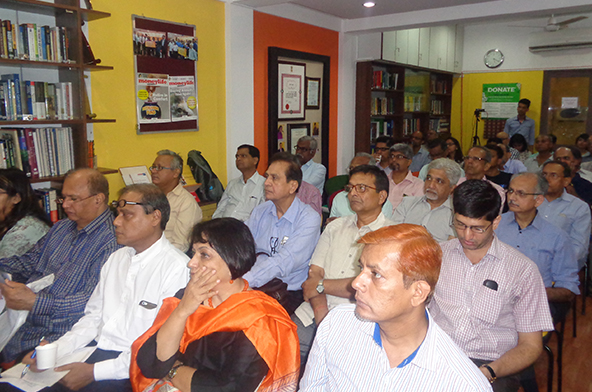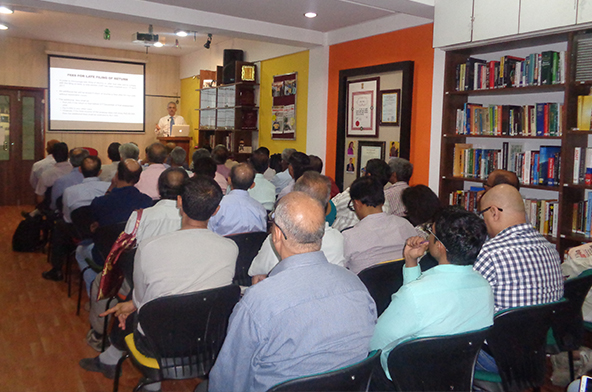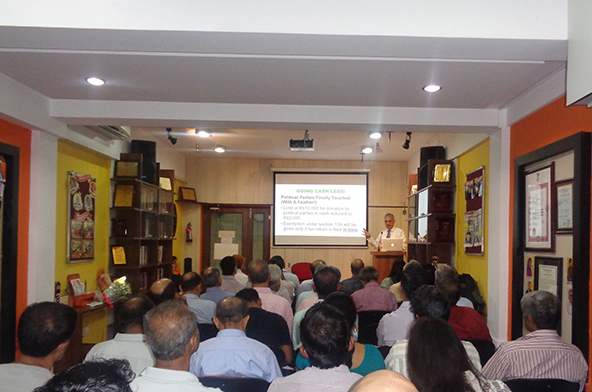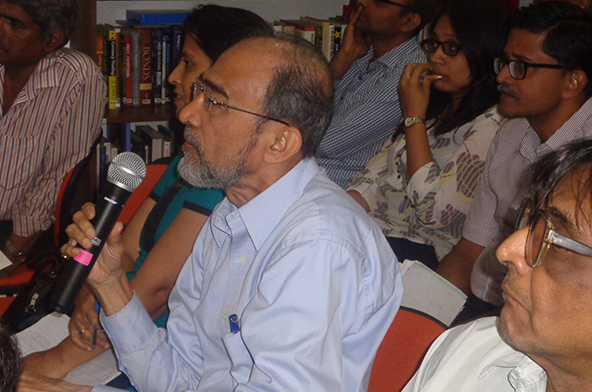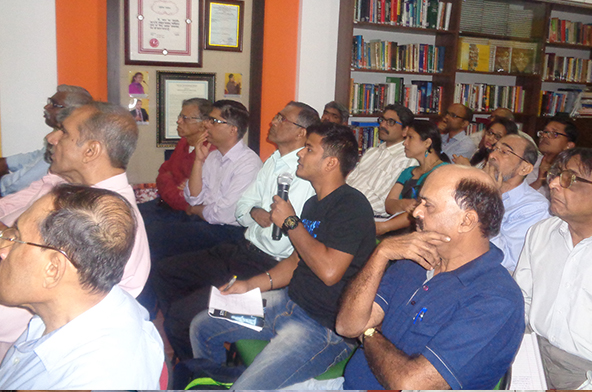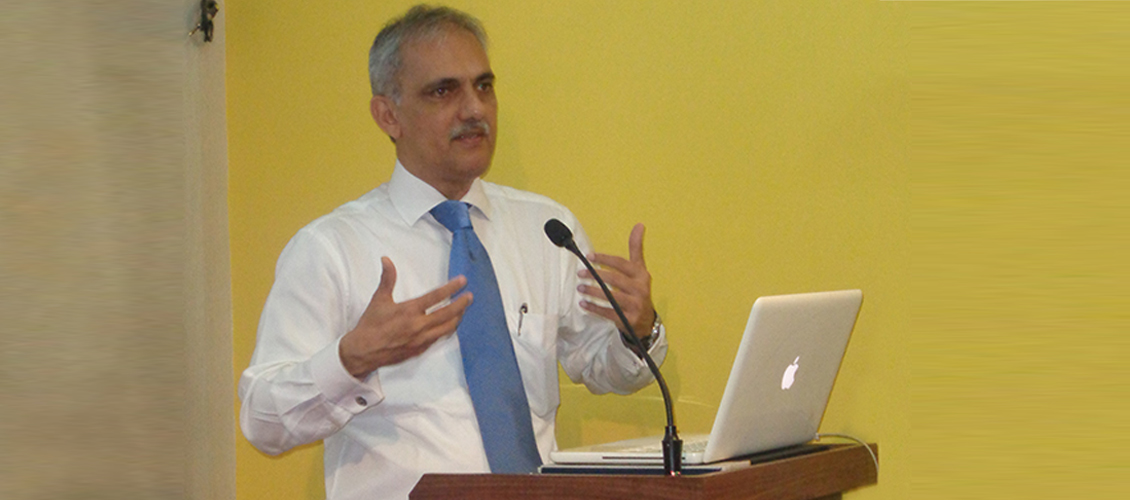
“The important message this Budget sent to all of us is to go cashless,” said Ameet Patel, a Chartered Accountant, who has been in practice for the past 30 years. He was analysing important and direct tax proposals in the Budget 2017 at a Moneylife Foundation seminar. This can be seen from some important provisions in tax to promote digital payments among businessmen. Not only revenue expenses but even depreciation will be disallowed on a capital asset if payment for that asset in excess of Rs10,000 is made in cash.”
The government has also put restrictions on cash payment of over Rs3 lakh under Section 269ST and 271DA in a in respect of a single transaction in a day. This provision is very widely defined. Mr Patel pointed out the applies to any person whether a taxpayer or not. It also applies to “one event or occasion from a person”. Therefore you cannot even break up the cash payment over several days if these all related to a single transaction such as paying money to a builder. You have to transact through an account payee cheque or a payee bank draft or use of electronic clearing system through a bank account. “While there are certain exemptions provided, if you contravene, then you will attract penalty of an amount equal to the amount received,” he added. “In all the amendments, there is reference to ‘electronic clearing system through a bank account, Mr Patel said, adding, “But it is not clear if credit card payments or payments through digital wallets be covered under this.”
Terming the demonetisation move as earthquake, Mr Patel feels its aftershock will be felt by those who have tried to misuse the cash deposit facility. “The Government has got massive amount of data, which is being analysed minutely. Cash deposits between 9 November 2016 and 30 December 2016 will attract a magnifying glass (from the tax sleuths).
Data analytics has been used for comparison of demonetisation data with information in Income Tax Department databases to identify taxpayers wherein the cash transaction does not appear to be in line with the taxpayer’s profile. Inquiries have already been received by many depositors. The Pradhan Mantri Garib Kalyan Yojana is the last opportunity to come clean for those have not yet,” he said.
Although the government gives sufficient time for filing tax returns, many taxpayers file returns after the due date. “In order to discourage late filing of returns (after due date) and to comply with the filing on time, a new section 234F has been inserted from 1 April 2017,” Mr Patel said, adding, “An additional fee will be levied if return of income is filed after the due date without reasonable cause. The additional fees will be Rs5,000 if the return is filed before 31st December of that assessment year and Rs10,000 in any other case. However, if the total income of the assesse does not cross Rs5 lakh, then the additional fees shall be restricted to Rs1,000.”
In the Budget 2017, the government has made amendment in Section 44AD, where for presumptive taxation if turnover is received otherwise than by cash then the presumed profit will be 6% instead of 8%. However, this provision is not available for professionals covered under Section 44ADA, Mr Patel said.
Explaining Section 44AD, Mr Patel, who is partner at Manohar Chowdhry & Associates, a CA firm with 12 offices across the country, said, “If turnover does not exceed Rs2 crore, then profit is deemed to be 8% of the turnover. But if the profit is actually more than 8% then you have to declare the higher amount. If any part of turnover is received by account payee cheque or account payee bank draft or through electronic clearing system, then profit is deemed to be 6% of that turnover. But if the profit is actually more than 8% then you have to declare the higher amount. Even for business expenses paid in cash, the limit is reduced to Rs10,000 from Rs20,000 under Section 40A(3)”.
Mr Patel then explained changes in tax rates for individuals proposed in the Budget. To grant some relief to taxpayers in the first slab (Rs2.50 lakh to Rs5 lakh), the tax rate of 10% is now reduced to 5% from FY2017-18.
“Under Section 87A, a rebate of up to Rs5,000 is allowed if total income does not exceed Rs5 lakh. In effect, for income up to Rs3 lakh, there would be no tax. However, in line with lowering of income tax slab rate for the first slab, the rebate has been lowered to Rs2,500 for the individual resident having income up to Rs3.50 lakh in a year,” Mr Patel added.
There is a new single page income tax return (ITR) form for those with income less than Rs5 lakh from income other than business or profession. In such cases, Mr Patel said, there would be no assessment or scrutiny for first tax return filed unless any specific information is received by the income-tax department against such person. He quipped: “I don’t know how many first time investors come under scruiny anyway.”
In the Budget, the government has made more people to pay surcharge, including individuals, Hindu undivided family (HUF), association of persons (AOP), body of individuals (BOI), artificial juridical person (AJP), who will be subject to a surcharge of 10% of the tax for having income above Rs50 lakh but less than Rs1 crore. Earlier, the surcharge was payable by all these for income over Rs1 crore.
Mr Patel then talked about new changes in income from house property. He said, “Many builders do not offer tax on notional income from the unoccupied, or unsold flats and godowns, which are held as stock in trade. However, tax department used to treat the same as notional income and charge it to tax. In order to provide some relief to the developers and boost the real estate sector, Section 23 will be amended from 1 April 2017.”
The amendment says, where any house property is held as stock in trade and is not let out for whole of the previous year or any part, “then the annual value of such property or part of the property, for the period up to one year from the end of the financial year in which the certificate of completion of construction of the property is obtained from the competent authority, shall be taken to be nil.”
In addition, there is a change in the definition of long-term capital asset for immovable property. The holding period for immovable assets, or land and building reduced to 24 months from present 36 months. “Hence, when you sell any house property, land, flat, building or godown, or in other words, any immovable property, if the same is held for more than 24 months, then the same shall be classified as a long term capital asset and it will be taxable as long term capital gains (LTCG),” Mr Patel said.
The government has also shifted the base year for indexation benefits to FY2001-02 from FY1981-82. Explaining the benefits of this move, Mr Patel said, “If asset is acquired prior to 1 April 2001, then you can substitute the actual cost with the fair market value (FMV) as on 1 April 2001. New Cost Inflation Index will be announced now from next year. Cost of improvement incurred on or after 1 April 2001 will also be allowed as a deduction.”
“While the government will now allow entities other than National Highways Authority of India (NHAI) and Rural Electrification Corp (REC) to issue Capital Gains Bonds for exemption under Section 54EC, the overall limit for this has remained at Rs50 lakh,” Mr Patel said.
He then explained new provisions in charging capital gains for cases like joint development agreement (JDA). He says, “Currently, in case of JDAs, the capital gains is charged in the year of such transfer of rights and not in the year when legal title is transferred. This was causing a huge problem in the JDA entered by the owner of land or property with the developer. Now, when the owner is an individual or HUF who enters into a JDA, the capital gains shall be chargeable to tax in the year in which certificate of completion for the whole or part of the project is issued by competent authority. If share in project is sold before completion, then new provision will not apply.”
In the Budget, the government has proposed to introduce a new section 194IB from 1 June 2017 for tax deduction at source (TDS) on rents. “Individual or HUF who is not liable to tax audit under Section 44AB and pays rent to a resident in excess of Rs50,000 per month or part of the month shall be liable to deduct TDS at 5% on such income payable to the payee. In addition, provisions of section 206AA shall be applicable if the payee does not have a PAN (i.e. 20% TDS). TDS shall be deducted only on the last day of the previous month or in the month in which the tenancy ends if the property is vacated. Personal use of the rented property will also attract TDS,” Mr Patel added. This is a draconian provision because it will apply to even cases like hall rented by a lower-middle class family for marriage. They would be liable to deduct tax and deposit. “This is not a workable provision. I think it will be amended or it will fail.”
Mr Patel also explained the capital gains treatment given for conversion of preference shares into equity shares. “As per the Budget 2017, conversion of preference share of a company into its equity share shall not be regarded as transfer. Therefore, there will be no capital gains at the time of conversion of preference shares into equity shares. Cost and date of acquisition of preference shares will be cost and date of acquisition of the equity shares,” he said.


